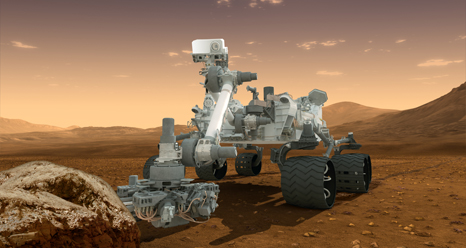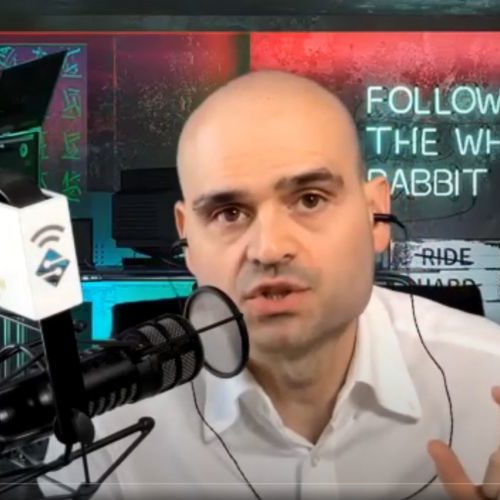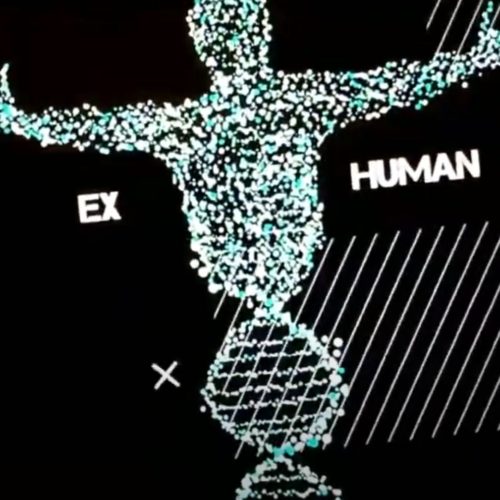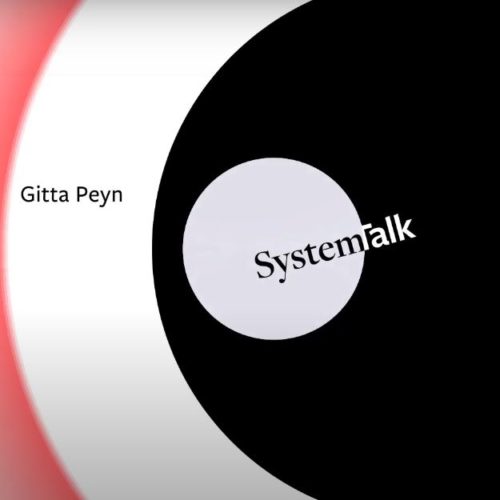NASA’s Seven Minutes of Terror: A Suspense Thriller Explains Curiosity’s Mars Landing
NASA’s Seven Minutes of Terror is a 5 minute long clip where team members share the challenges of Curiosity‘s final minutes to landing on the surface of Mars. Produced in the tradition of a suspense thriller, and enhanced with a dramatic music score that sounds like Hans Zimmer’s Inception soundtrack, the film takes us through the incredibly big, complex and numerous challenges that the Martian rover must overcome just perfectly in order to have a successful landing.
The Grand Entrance (William Shatner) — Curiosity landing on Mars
William Shatner and the Grand Entrance: As NASA prepares for Curiosity rover landing on Mars, William Shatner shares this thrilling story of NASA’s hardest planetary science mission to date. The video titled, “Grand Entrance,” guides viewers from entry through descent, and after landing.
Fireworks Over Mars – The Spirit of 76 Pyrotechnics (from NASA’s original mission description)
One month and a day after celebrating its independence with fireworks exhibitions throughout the country, America will carry its penchant for awe-inspiring aerial pyrotechnic displays to the skies of another world. Some pyrotechnics will be as small as the energy released by a box of matches. One packs the same oomph as a stick of TNT. Whether they be large or small, on the evening of August 5th (Pacific time), all 76 must work on cue as NASA’s next Mars rover, Curiosity, carried by the Mars Science Laboratory, streaks through the Red Planet’s atmosphere on its way to a landing at Gale Crater.

“We are definitely coming in with a bang — or a series of them,” said Pete Theisinger, Mars Science Laboratory project manager at NASA’s Jet Propulsion Laboratory in Pasadena, Calif. “You only get one shot at a Mars landing, and the pyrotechnic charges we are using are great for reliably providing instantaneous, irreversible actions like deploying a parachute or opening a fuel valve.”
Explosive pyrotechnic devices predate the space age by about a thousand years. Around 750 A.D., people in China began stuffing an early form of gunpowder into bamboo shoots and throwing them into a fire. At some point, someone interested in taking this new discovery to the next level (probably also from that region), decided aerial explosions would be even cooler, and the “aerial salute” was born. Fireworks were also part of America’s very first Independence Day in 1777.
Pyrotechnics, or pyromechanical devices, are a natural but highly-engineered extension of these early fireworks. Instead of a rocket’s red glare and bombs bursting in air, the energy from these explosions is contained within a mechanism, where it is used to move, cut, pull or separate something. Controlled explosions are a valuable tool to those who explore beyond Earth’s atmosphere because they are quick and reliable.
“When we need valves to open, or things to move or come apart, we want to be confident they will do so within milliseconds of the time we plan for them to do so,” said Rich Webster, a pyromechanical engineer at JPL. “With pyros, no electrical motors need to move. No latches need to be unlatched. We blow things apart — scientifically.”
Seventeen minutes before landing, the first 10 of 76 pyros will fire within five milliseconds of each other, releasing the cruise stage that provided the entry capsule (and its cocooned descent vehicle and the Curiosity rover) with power, communications and thermal control support during its 254-day journey to Mars.
“We have essentially three miniature guillotines onboard that, when the pyros fire, cut cabling and metal tubing that run between the cruise stage and the entry capsule,” said Luke Dubord, avionics engineer for Mars Science Laboratory at JPL. “Then a retraction pyro pulls them out of the way. Along with that, we’ve got six pyrotechnic separation nuts, which when fired, will actually accomplish the separation.”
One hundred and twenty-five milliseconds later, two more pyros fire, releasing compressed springs that jettison two 165-pounds(75-kilogram) solid tungsten weights. These weights allow the entry capsule to perform history’s first planetary lifting body entry (see http://mars.jpl.nasa.gov/msl/mission/technology/insituexploration/edl/guidedentry/ ). A dozen minutes and one fiery, lifting-body atmospheric reentry later, another smaller set of tungsten weights is ejected by pyros to re-adjust the lander’s center of mass for the final approach to the surface. A few seconds after that, the largest bang since the spacecraft separated from its Atlas rocket 254 days before is scheduled to occur.
“The Mars Science Lab parachute is the largest used on a planetary mission,” said Dubord. “When folded up and in its canister, it’s still as big as a trashcan. We have to get that folded-up chute out of its canister and unfolding in a hurry. The best way to do that is get it quickly away from spacecraft and out into the freestream using a mortar.”
The best way to do that, the engineers at JPL decided, was to include a pyrotechnic charge equivalent to a stick of TNT.
“When something like this goes off, it makes a lot of noise” said Dubord. “Of course, at 8.7 miles [14 kilometers] up and a little over Mach 1, over Mars, I doubt anybody will be there to hear it.”
While the ejection of the parachute is the biggest pyrotechnic display during the crucial entry, descent and landing, it is certainly not the last. The landing system needs to be released from the backshell that helped protect it during entry. The sky crane’s descent engines need to be pressurized, and the rover itself needs to be released from the sky crane, where it is lowered on tethers toward the surface. All told, there are another 44 controlled explosions that need to happen at exactly the right time and at absolutely no other time for Curiosity to touch down safely at Gale Crater.
“Excluding the parachute mortar, the total ‘explosive’ material in all the pyrotechnics aboard the spacecraft is only about 50 to 60 grams,” said Webster. “That is about the same amount of combustible material in the air bag in your car’s steering wheel. When you do the math, the amount of explosive material in each pyrotechnic is only about what you would get out of a pack of matches.
“The thing is, a pack of matches won’t help you land on Mars….pyrotechnics will,” Webster added. The Mars Science Laboratory mission is managed by JPL for NASA’s Science Mission Directorate in Washington. Curiosity was designed, developed and assembled at JPL. Caltech manages JPL for NASA.
Video Update: Curiosity Has Landed
Complete MSL Curiosity Descent – Full Quality Enhanced 1080p + Heat Shield impact
This is a full-resolution version of the NASA Curiosity rover descent to Mars, taken by the MARDI descent imager. As of August 20, all but a dozen 1600×1200 frames have been uploaded from the rover, and those missing were interpolated using thumbnail data. The result was applied a heavy noise reduction, color balance, and sharpening for best visibility.
The video plays at 15fps, or 3x realtime. The heat shield impacts in the lower left frame at 0:21, and is shown enlarged at the end of the video. Image source: http://mars.jpl.nasa.gov/msl/multimedia/raw/?s=0&camera=MARDI
Related articles
- The Red Planet Show: Can Mars One’s Reality TV Pay for Space Colonization?!
- Elon Musk to Launch SpaceX Tomorrow Morning
- Peter Diamandis and James Cameron Go AVATAR, Launch the First Asteroid Mining Company
- Elon Musk’s Space X on CBS 60 Minutes: Like a Little Kid Fighting a Bunch of Sumo Wrestlers
- Space Junk: A Little Spring Cleaning Is Our Only Way Out
- Dan Barry on Singularity 1 on 1: Don’t Let Anyone Tell You That You Can’t Reach Your Dreams
- Robots in Space: Robonaut 2 Blasts Off to the International Space Station
- Can Terraforming Venus Be The Solution To Population Growth?
- NASA Set To Launch NuSTAR, Peer Into Black Holes
- Simulated Space ‘Terror’ Offers NASA an Online Following









